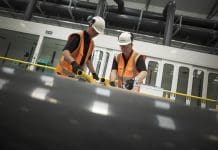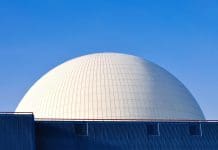HS2 has introduced a new approach to tackling Invasive Non-Native Species, saving time, money and carbon output by reducing waste to landfill and minimising soil excavation
Traditionally on infrastructure projects, all soil with Invasive Non-Native Species (INNS) plants, rhizomes and seeds present would be removed from the site, including excavation of a prescribed larger buffer zone, and disposed of according to current legislation for controlled waste.
HS2 is implementing measures focused on biosecurity and ‘surgical’ excavation, avoiding most of the costs and lorry movements associated with waste disposal but assuring removal of the problem.
Non-native plants such as Japanese Knotweed, Himalayan Balsam, Giant Hogweed and Rhododendron are becoming more common to our landscapes, to the detriment of native habitats.
Collaborating
Working firm AECOM, HS2 has implemented an effective strategy which drastically reduces waste creation, ultimately only implementing offsite disposal of soil contaminated with INNS and their seeds if other solutions are not feasible.
HS2’s contractor Fusion JV worked with specialists in AECOM to manage a range of INNS, including the removal of significant areas of Japanese knotweed in the Colne Valley area.
Minimising excavation saves substantial time, cost and carbon footprint by heavily reducing waste to landfill, resulting in cost savings estimated at £1.8m.
Conventional excavation of the Japanese Knotweed would have required vastly more soil to be removed, including areas adjacent to waterbodies in the Colne Valley, which would have necessitated major temporary works and significantly more waste disposal and imported backfill.
Through a more strategic approach involving avoidance, partial removal, selective re-use, and capping instead of simply transporting away soil potentially impacted by INNS material, the excavation requirements were less than 30% of original estimates.
In the Midlands, 40 excavation sites were de-scoped as a result of AECOM and LM (a joint venture of Laing O’Rourke & J. Murphy) taking this approach when dealing with Rhododendron, generating an estimated cost saving of £20m achieved through reduced spend on labour, plant, materials and landfill tax.
The site preparation works by Fusion JV for the 3.5km Colne Valley Viaduct involved extensive herbicide treatment followed by 4,700m3 of Japanese Knotweed-infested soil removal, all executed with strict biosecurity protocols within the Mid Colne Valley Site of Special Scientific Interest.
An important area of environmental work
HS2’s environment director Peter Miller, said: “As part of our extensive environment programme, we are constantly looking for ways to protect our country’s precious biodiversity and to further boost HS2’s green credentials.
“Working with AECOM to tackle Invasive Non-Native Species, we have been able to significantly reduce the amount of waste to landfill, reduce the project’s carbon footprint and save money.”
Patrick Cox, managing director for environmental contracting at AECOM said: “Our pragmatic and evidence-based approach is minimising excavation and reducing the carbon footprint, whilst also saving time and money.
“Tackling Invasive Non-Native Species is an important area of environmental work and innovative approaches such as this are leading the way for more sustainable and efficient infrastructure delivery.
“So far in the Colne Valley, AECOM has treated 47 Japanese knotweed stands, 10 Himalayan balsam stands and supported biosecurity implementation in highly infested waterbodies, all without slowing down the vital enabling works.”
















